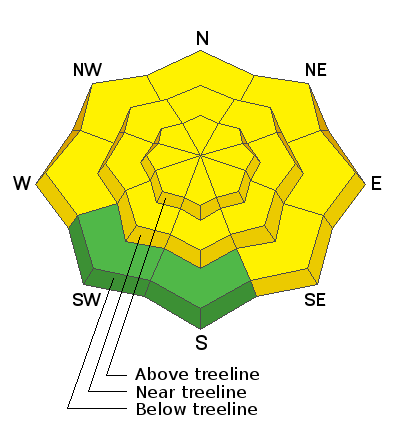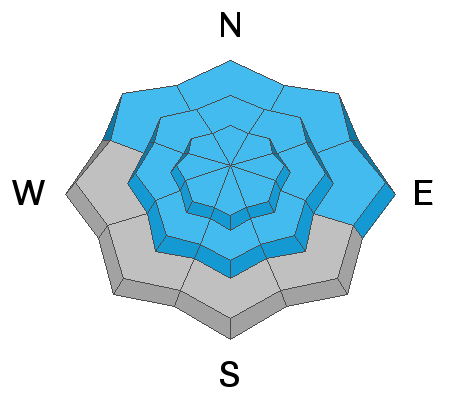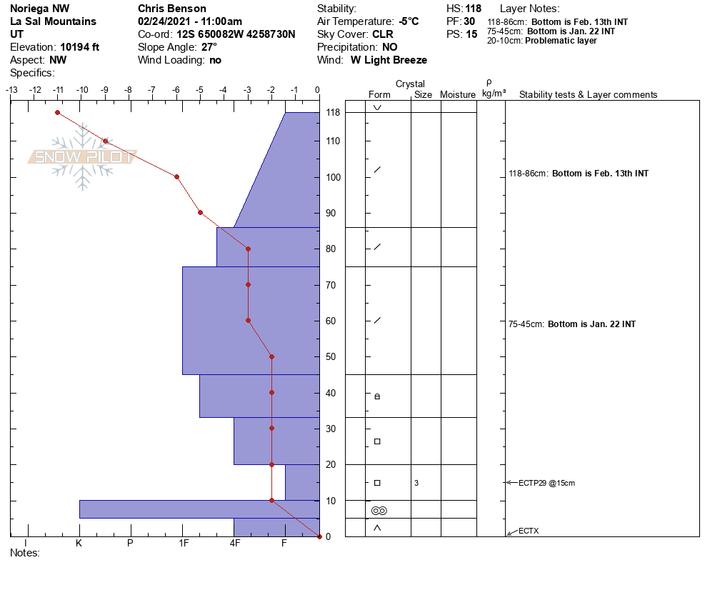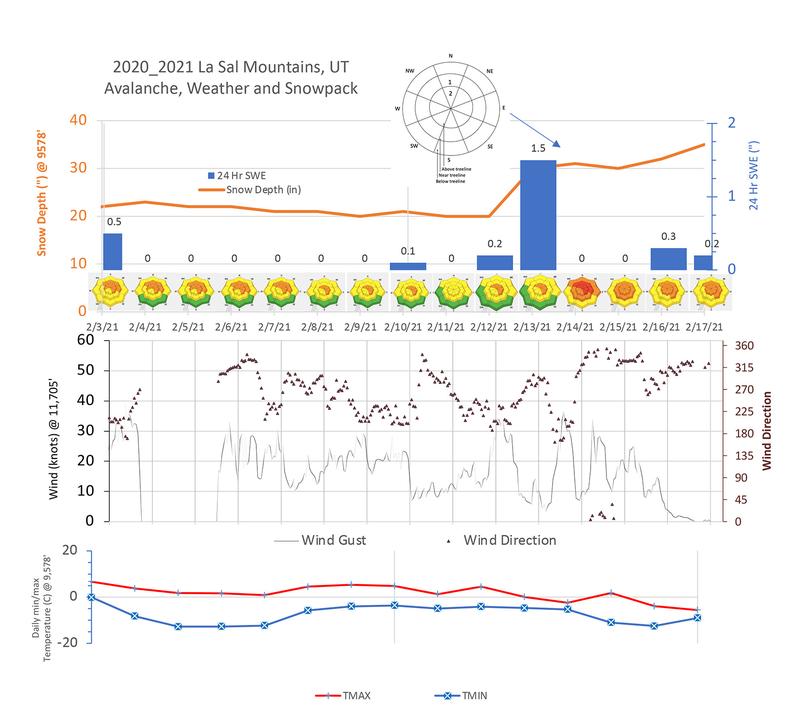The Geyser Pass Road was plowed last week. 4x4 with good tires is recommended.
The Lower Utah Nordic Alliance (LUNA) last packed and rolled the lower meadow through Gold Basin last Thursday.
24 Hour Snow 0" 72 Hour Snow 0" Base Depth in Gold Basin 48" Wind 5 Temp 5 F
A cold start to the day, as a trough passes overhead and brings cooler air from the north. Today it will be partly sunny followed by clearing skies. Highs 25 to 35 F. North winds 5 to 10 mph shifting to Southwest in the afternoon. Another low pressure system will approach this evening, but will favor areas to our north. For the weekend, continued shortwave disturbances will bring increasing clouds, cooler temperatures, but little precipitation.
Snowpack Discussion
Warm temperatures and time have helped consolidate the snowpack, but weak layers are still present, especially in shady areas at higher elevations. The snow we received last week has settled into a 1-3' slab that may disguise signs of the buried weak layers underneath. Yesterday, I found supportive snow and experienced localized whumpfing on a ridgeline where the snowpack was thinner and weaker. On a NW aspect near treeline, I observed poor snowpack structure and a stubborn slab. On a north aspect above treeline, the snowpack is deeper and contains stiff, wind-drifted snow that rests on weak layers. While I didn't get any results with two Extended Column Tests (ECTX x2), in areas where this slab is thinner, you can still trigger deep and dangerous avalanches. On sunny aspects, several inches of moist snow were present and may now be supportive crusts after several warm days.










